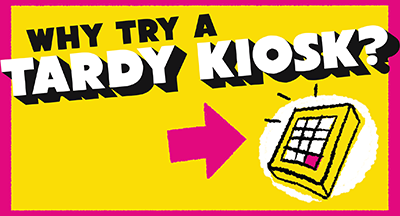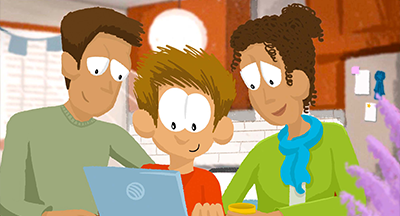
Six months into the year, how are these important education conversations shaping up? Here's a look back at what we predicted in January.
Computational Thinking in Early Childhood
What we said in January:
- The computer science field is facing a shortage of workers.
- Schools can boost interest in computational thinking.
- Early childhood is the best time to get started.
In the news so far:
You can hardly swing a USB cable without hitting a charming story about kids learning to code. In fact, the idea of introducing computer programming in the classroom dates all the way back to the late 1960s. However, parents, teachers, even toy manufacturers are turning to coding to hook kids on the mixture of logic and creativity that leads to computer science.
But computational thinking is so much more than coding programs. Teachers are finding ways to teach STEM concepts without screens. In fact, the basic concepts of computational thinking—breaking problems into smaller challenges, creating algorithms or routines to solve everyday problems, and recognizing patterns—can be taught without ever firing up a computer. Even simple activities like making a sequence of activities for cleaning up the classroom can be a sneaky way to teach students to think like a programmer.
Lessons learned:
Start with the basic concepts, rather than jumping right to coding languages, to rewire students’ brains in preparation.
What to read next:
On the Road with Lauren: Can Kindergartners Learn to Code?What Do We Really Know About Screen Time?
Talking to Parents About Digital Citizenship
The Code Twins
Digital Badging for Professional Development
What we said in January:- Digital badging may help ease the cost involved in PD.
- Self-paced PD is a nice option for busy teachers and staff.
- Support for a DIY program is available, sometimes for free.
In the news so far:
What matters gets measured, so it’s encouraging to see reporting about digital badging’s effectiveness coming from Digital Promise. Their findings are positive for the future of digital badging, but at the same time point out the lack of policy—a crucial component for scaling micro-credential PD options.
Houghton Mifflin Harcourt’s 4th annual educator confidence report also shows more teachers are looking at self-guided and online communities for professional growth. 64% of respondents said their primary method of PD included self-guided research (up 15% from last year) and 39% used online communities (up 9%).
Lessons learned:
Digital badging is indeed growing—it’s time for K12 policy makers and leaders to get on board and recognize this trend, if they haven’t already.
What to read next:
One-Page Pitch: Digital Badging10 Digital Badges Worth Pursuing
Better Hiring Thanks to HR Technology
What we said in January:- Technology can help speed up and refine hiring.
- Video has transformed the onboarding process.
- Districts who streamline the hiring process can set themselves apart in a competitive industry.
In the news so far:
Artificial intelligence is the hot topic in hiring. Most AI tools are intended to help level the playing field, minimizing personal biases in hiring, especially with regard to diversity. Still, AI is only as smart as we program it to be, and with most of the people creating AI software still looking relatively homogenous, red flags are popping up.
For example, CareerBuilder’s leadership team uses an AI database which mines more than 2 million job postings, 10 million job titles, and a billion skills. Unconscious bias can cloud human interviewers from making a truly fair decision, while AI has a shot at remaining more neutral. AI is also able to identify wording to attract a diverse sampling of applicants—one example from Textio, which augments language used in job postings, found a huge discrepancy between the phrases “prior experience” and “demonstrated ability.” The former attracted 50% more men, while the latter resonated with 40% more women.
One of the bigger concerns in using AI is the “garbage in, garbage out” tech adage. If the AI is trained using bogus skills, language, or other criteria, it will not meet the neutrality requirements so important to hiring laws. In fact, Illinois has just become the first state to ban the use of AI to evaluate video interviews.
Lessons learned:
The desire to level the playing field in hiring is noble—but technology needs human guidance to be effective.
What to read next:
High-Tech HR: One-Way Video InterviewsFollow-up resource: Subscribe for more
Want to keep your finger on the pulse of K12 leadership, culture, and technology? Enter your email address in the footer below.WHAT'S NEXT FOR YOUR EDTECH? The right combo of tools & support retains staff and serves students better. We'd love to help. Visit skyward.com/get-started to learn more.

|
Erin Werra Blogger, Researcher, and Edvocate |
Erin Werra is a content writer and strategist at Skyward’s Advancing K12 blog. Her writing about K12 edtech, data, security, social-emotional learning, and leadership has appeared in THE Journal, District Administration, eSchool News, and more. She enjoys puzzling over details to make K12 edtech info accessible for all. Outside of edtech, she’s waxing poetic about motherhood, personality traits, and self-growth.




